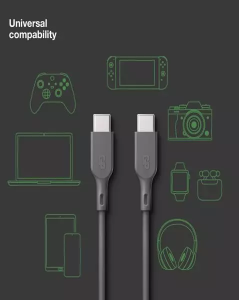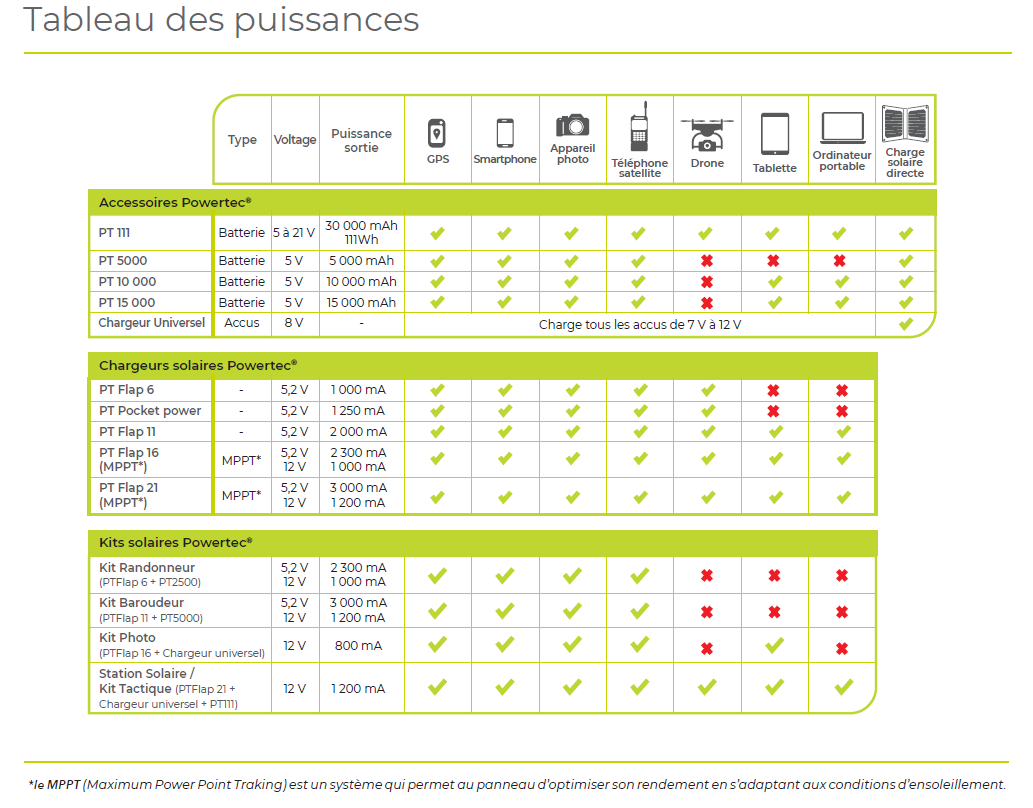Mini Cart
The right USB C cable for your outdoor activities!
Welcome to our exclusive guide on choosing the USB C cable, specially designed for hikers and demanding outdoor adventurers. In this article, we will explore the crucial aspects to consider when selecting a USB C to USB C cable to ensure reliable connectivity during your outdoor expeditions. Whether you’re a trekking enthusiast or a seasoned adventurer, the right cable can make all the difference. Follow us for a deep dive into the world of USB C cables for your active lifestyle.
USB cable fundamentals
Understand its essential functioning and appreciate the many benefits it provides hikers. As we explore, we’ll highlight the key differences that set USB C cables apart from other connector types. By understanding the versatility and reversibility of this cable, hikers will be better equipped to make informed choices when it comes to connectivity. From fast data transfer to efficient charging, this chapter will lay the foundation to understand how this cable can meet the specific needs of adventurers looking for reliable connectivity during their outdoor expeditions.

Discover our cables and chargers
Selection criteria for hiking
Explore the crucial selection criteria for choosing the ideal cable for your hikes.
The criteria for selecting a cable for hiking is essential to ensure reliable and seamless connectivity during your outdoor adventures. Here are some key criteria to consider when choosing your cable for hiking:
1.Durability:
Opt for a cable with sturdy construction and durable materials. Reinforced cables, with nylon or Kevlar sheaths, offer increased resistance to twisting, bending, and adverse weather conditions.
2.Suitable length:
Select a cable length appropriate to your needs when hiking. A cable that is too short can be uncomfortable, while a cable that is too long can be cumbersome. A length of around 1 to 2 meters is usually ideal.
3. lightweight
Choose a lightweight cable to avoid adding unnecessary weight to your hiking gear. Lightweight but durable materials are essential for an enjoyable outdoor experience.
4.Reinforced connectors:
Make sure the connectors are reinforced to withstand frequent use. Cables with reinforced connectors reduce the risk of damage caused by repeated insertion and removal.
5.Compatibility:
Check the cable’s compatibility with your electronic devices, including smartphones, tablets, and other gadgets you plan to take hiking. A versatile cable can be used with various devices.
6.Weather resistance:
Opt for a weather-resistant cable if you plan to use it in harsh weather conditions. Some cables are designed to be waterproof, protecting your connections even in the rain.
7.Easy to store:
Choose a USB C cable that is easy to store and carry. Retractable cables or those with cable management mechanisms can be handy for avoiding tangles.
8.Quality certifications:
Look for USB C cables certified by quality standards, such as USB-IF (USB Implementers Forum), ensuring reliable performance and compatibility with USB standards.
By considering these criteria, you can choose a USB C cable that meets your specific hiking needs, ensuring stable and long-lasting connectivity during your outdoor adventures.
Seamless connectivity: weather-resistant cables
Ensuring seamless connectivity during your outdoor adventures requires weatherproof USB C cables. These cables are specially designed to cope with adverse weather conditions, providing stable connectivity even in harsh environments. Here’s why weatherproof USB C cables are essential for hikers and outdoor adventurers:
Protection against water and humidity:
Weatherproof USB C cables often feature waterproof coatings that protect against water and humidity. This ensures that connectivity is not compromised even in rain or wet conditions.
Extreme Temperature Resistance:
These cables are designed to withstand extreme temperatures, from intense heat to freezing cold. This resistance to temperature variations guarantees optimal operation of the cable in all situations.
Durable Materials:
Weather-resistant cables use durable materials such as reinforced nylon, Kevlar, or other rugged polymer jackets. These materials provide additional protection against wear and tear from friction, twisting and bending.
Waterproof connectors:
The connectors on weatherproof USB C cables often have waterproof seals to keep water out. This ensures a secure connection even in humid environments.
Shock resistance: These cables are generally reinforced to resist shock and impact. Whether you’re hiking in the mountains or venturing on rugged trails, your cable will remain protected from physical damage.
Convenient Design:
Some weatherproof USB C cables feature a practical design, such as retractable cables or cable management mechanisms. This makes it easy to store and transport when traveling outdoors.
Versatility for outdoor activities: Whether you are camping, hiking, cycling or other outdoor activities, weatherproof USB C cables are suitable for various scenarios, ensuring reliable connectivity wherever you are.
By investing in weather-resistant cables, hikers and adventurers can ensure their devices stay connected and operational, even in the face of unpredictable weather. These cables provide peace of mind, allowing you to stay connected with the outside world while exploring nature.
Choosing quality for successful connected adventures
Let’s conclude our exploration by highlighting the crucial importance of choosing quality USB C to USB C cables for worry-free connected adventures. Specific recommendations and essential tips for making the best decision based on your specific needs highlight the importance of durability, practicality, and efficiency.
The quality of the USB C to USB C cable can make all the difference in the success of your outdoor expeditions, ensuring reliable and long-lasting connectivity. By investing in a quality cable, you ensure that your technology equipment remains operational even in the most demanding environments, adding a layer of reliability to your adventures.
Frequently asked questions about USB C cables:
1. What makes a USB C cable different from other charging cables? A USB C cable is reversible, providing connectivity on both sides. It also provides fast data transfer and powerful charging.
2. What cable length is ideal for hiking?
A cable length of approximately 1 to 2 meters provides a good balance between practicality and portability when hiking.
3. How to choose a durable USB C cable for outdoor use? Opt for cables with resistant materials, reinforced connectors, and durability certification for outdoor use.
4. Are the cables water and weather resistant? Some USB C cables are designed to be water and weather resistant, but it’s important to check the product specifications.
5. Are there cables compatible with solar charging devices? Yes, some USB C cables are specifically designed to work efficiently with solar chargers, providing reliable connectivity even in the great outdoors.
Conclusion:
Choosing the right cable for your outdoor adventures is a crucial step in ensuring reliable, worry-free connectivity. By investing in a quality cable, you ensure that your technology equipment remains operational, even in the most demanding environments. Opt for durability, practicality, and efficiency with a USB C cable suited to your adventurous lifestyle.

